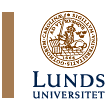

|
Panel No. 18Panel Title: Empires, Nationalisms and the Containment of Labour in South Asia: Historical and Contemporary IssuesConvenor: Ravi
Ahuja, Dept of History, South Asia Institute, Heidelberg University,
Germany Wednesday 7 July, 8–12 & 13–17 Panel Abstract: This panel seeks
to look at interrelated processes of state and class formation that
conditioned the lives of working people in the wider contexts of
global capitalism and its changing national and imperial political
structures, colonial and neo-colonial. We welcome contributions
regarding the colonial or the postcolonial period, formal or informal
empires, anti-imperialist as well as loyalist varieties of nationalism.
We would like to focus on labour as a political issue and on the
politics of labour (labour policy, social legislation, economic
policy affecting labour, ideological constructions of labour as
a social category, strategies of various political currents to harness
and control labour, labour movements etc).
Papers accepted for presentation in the panel:Paper Giver 1: Nitin Sinha, Doctoral student, School of Oriental and African Studies, London, UK Paper 1 Title: Railway Labourers and the Politics of Strikes in Colonial Bihar, 1918-22 Paper Abstract: The period, 1918 to 1922 in
general has been regarded as a period of multiple strands in the
history of nationalism and colonialism, though the multiplicity
always is quite obscured in the standard accounts of these ideologies
and explanatory models. Particularly, this is more the case with
the standard nationalist/marxist accounts, which tend either to
subsume or at least accommodate the various popular protests that
took place within this period in their unitary and unidirectional
flow of the rise of anti-colonial nationalism or as manifesting
the teleological growth of the working class consciousness. Thus,
these accounts also incorporate the fresh spate of labour strikes
within their fold as a sign of growing popularisation of the feeling
of nationalism first, and second the self evolution of the colonial
subjects in their struggle against colonialism. The Marxist strand
poses the growing numbers of strikes as indicative of, if not the
complete realisation of the class consciousness then of its progressive
growth through the working of trade unions. Interestingly, the colonial
contemporary reflections also shared the premise by accepting that
the popular protests were mainly the works of ‘outsiders’
and ‘instigators’. Paper Giver 2: Ravi Ahuja, South Asia Institute, University of Heidelberg, Germany Paper 2 Title: Mobility and Containment: The Voyages of South Asian Seamen, c. 1900-1960 Paper Abstract: South Asian steamship labour
accounted by 1938 for about a quarter of the British merchant marine’s
workforce. Hundreds of thousands of these so-called ‘lascars’
migrated from various regions of the subcontinent over large distances
seeking employment in the two ports of recruitment for steam ships,
Bombay and Calcutta. Maritime labour networks (i.e. networks that
were often based on shared ethnicity and utilized for conflicting
purposes by both employers and employees) extended from remote villages
to India’s two major harbours and beyond to other colonial
ports and to the centres of metropolitan capitalism. These networks
could also be appropriated for purposes of international migration:
they could enable ‘lascars’ (who received only about one
quarter of the wages of ‘white’ ratings) to get access
to better paid occupations in metropolitan countries. Scholars have
started to look at the communities of ‘deserted’ Indian
seamen that sprang up in various British cities. What is remarkable,
however, is that these communities remained rather small: Until
the 1950s the number of all Indians living in Britain was, it has
been estimated, not higher than 8,000. Paper Giver 3: Hira Singh, Department of Sociology, York University, Canada Paper 3 Title: Politics of Immigrant Farm Labour in British Columbia (Canada): Agency of the State and Workers’ Resistance Paper Abstract: The paper deals with the political dimensions of farm labour in British Columbia (Canada) in a historical perspective. Since 1905, East Indian immigrants have been the mainstay of farm labour in the agricultural hinterlands of the Fraser Valley in British Columbia (Canada). The introduction of East Indian labour to the farms of British Columbia has its origin in a multilayered political (and economic) process on a global scale involving the British colonial state in India, the Canadian state, the Imperial state in England and its expansionist wars in South Africa. Against this historical background, the paper deals mainly with the direct and indirect intervention by the Canadian state on behalf of the agribusiness. Furthermore, it deals with the relations between the farmers and farmworkers mediated by class, race, and nationality. Finally, it discusses the complex processes of continuous resistance and struggle by the immigrants to overcome their marginalization in terms of class, race, and citizenship. The dual role of ethnicity in immigrants’ resistance is analyzed. The paper is based on a combination of evidence collected through ethnographic fieldwork with the farmworkers in British Columbia and the secondary material from the various sources. Paper Giver 4: Benjamin Zachariah, Department of History, University of Sheffield, UK Paper 4 Title: The ‘Masses’ and the Making of the Myth of the Benign State in India Paper Abstract: The centrality of the anti-imperialist
struggle and the alliance sought between Indian capitalists and
Indian nationalism of various descriptions (not always successfully)
often led to a deferral of questions of labour rights, wages and
welfare – both before and after independence. This happened
simultaneously with attempts of sections of the nationalist movement,
then organised on a coalitional basis, to mobilise labour behind
the national movement. The nationalist leadership and the postcolonial
state it controlled thereafter claimed to represent labour and at
the same time demanded discipline from the labour force for 'national'
goals. Paper Giver 5: Nandini Gooptu, St Antony’s College and Queen Elizabeth House, Oxford, UK Paper 5 Title: Economic liberalisation, labour and politics: Calcutta jute mill workers in the 1980s and 90s Paper Abstract: It is well-known that economic reforms in India in recent decades have been accompanied by a move towards flexible use of labour and a ‘casualisation’ or‘informalisation’ of labour. An emerging body of literature suggests that labour market restructuring of this kind might variously undermine class-based mobilisation, fuel identity politics and single issue oriented agitations, or contribute to violence and ethnic or sectarian conflict, and ‘criminalisation’ of politics. This papers asks how unemployment and increasing economic vulnerability reshape political subjectivities of urban industrial workers and examines the impact of this on wider urban politics. With a case study of Calcutta jute mill areas, the paper uncovers how workers’ political ideas about public morality and responsibility, or about justice, rights, citizenship, the state and democracy are transformed in the context of economic liberalisation, and how such emerging ideas then mediate political behaviour. The aim is to assess how urban labour market changes and related social and ideological developments in the locality affect wider democratic and party politics, and urban political conflict. Paper Giver 6: Saroj Giri, Centre de Sciences Humaines, New Delhi, India Paper 6 Title: Global movement, local struggle: Workers in the World Social Forum in India Paper Abstract: Subjectivity by its very nature
is never given apriori and closed. It is open and fluid even as
at any point in time there are stable fields or frames of reference.
This means that the particularity of what constitutes subjectivity
is a changing phenomenon: thus the subject in the Indian context
who fought against colonialism is not the same as today’s subject
taken over by say the Hindu right. In this context what is the new
subjectivity brought about by the World Social Forum and related
social movements. The general point to be remembered however is
not just that at different points the given subject acts differently,
given the different place and time, but also that what it means
to be a subject itself changes, depending on what the subject does.
The subject is not just an empty universal with any particular since
it possesses definite powers and tendencies (so universal is not
given but not arbitrary either).
SASNET - Swedish South Asian Studies Network/Lund
University
|

